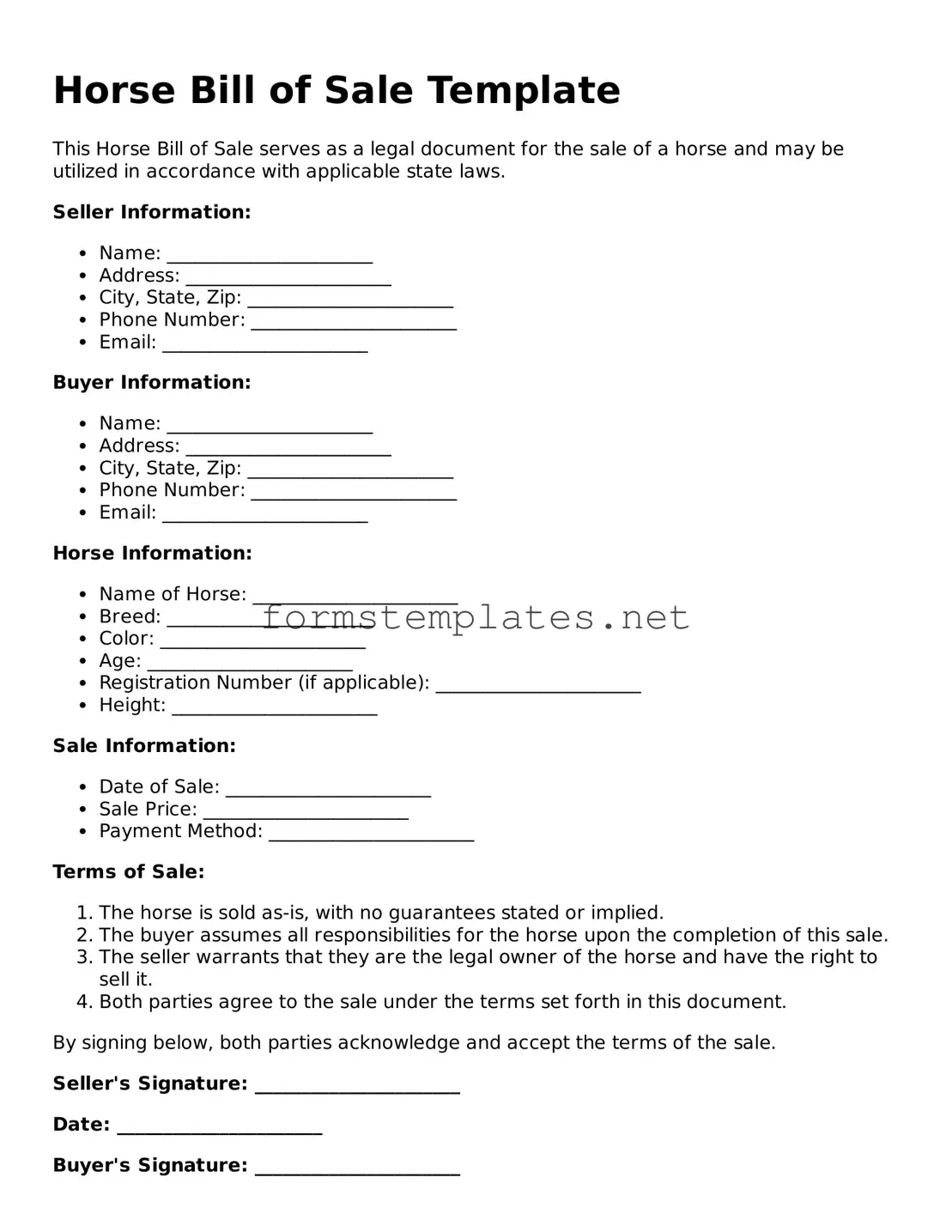A Horse Bill of Sale form is a legal document that records the sale and transfer of ownership of a horse from one party to another. This form serves as proof of the transaction and outlines the details of the sale, including the horse's description, the sale price, and the names of the buyer and seller.
Why is a Horse Bill of Sale important?
The Horse Bill of Sale is important for several reasons:
-
It provides legal protection for both the buyer and the seller.
-
It helps establish the ownership of the horse, which can be crucial in disputes.
-
It may be required for registration with certain equestrian organizations.
-
It ensures that both parties have a clear understanding of the terms of the sale.
A typical Horse Bill of Sale includes the following information:
-
The names and addresses of the buyer and seller.
-
A detailed description of the horse, including its name, breed, age, color, and any identifying marks.
-
The sale price of the horse.
-
The date of the sale.
-
Any warranties or guarantees provided by the seller.
-
Signatures of both parties to validate the agreement.
Is a Horse Bill of Sale required by law?
While a Horse Bill of Sale is not always legally required, it is highly recommended. Many states do not mandate a bill of sale for horse transactions, but having one can prevent misunderstandings and provide legal recourse if necessary. It is wise to check local laws to determine specific requirements.
Can a Horse Bill of Sale be modified after it is signed?
Once a Horse Bill of Sale is signed by both parties, it is considered a binding contract. Modifications may be made, but they should be documented in writing and signed by both parties to ensure clarity and enforceability. Verbal agreements regarding changes are generally not legally binding.
What happens if the horse has health issues after the sale?
The Horse Bill of Sale can include specific clauses regarding the horse's health. If a seller provides a warranty regarding the horse's health and the horse is found to have undisclosed health issues after the sale, the buyer may have grounds for a complaint. However, if the sale is "as-is," the buyer assumes all risks associated with the horse's condition.
Can a Horse Bill of Sale be used for other types of livestock?
While a Horse Bill of Sale is specifically designed for horses, similar forms can be used for other types of livestock. The key is to ensure that the document accurately reflects the details of the sale and meets any legal requirements for the specific type of animal involved.
Horse Bill of Sale forms can be obtained through various sources, including:
-
Online legal document services that offer customizable templates.
-
Local equestrian organizations or clubs that may provide standard forms.
-
Legal stationery stores that sell pre-printed forms.
Is it necessary to have the Horse Bill of Sale notarized?
Notarization of a Horse Bill of Sale is not typically required, but it can add an extra layer of authenticity to the document. Having the bill notarized may be beneficial if there is a possibility of future disputes regarding the sale.
